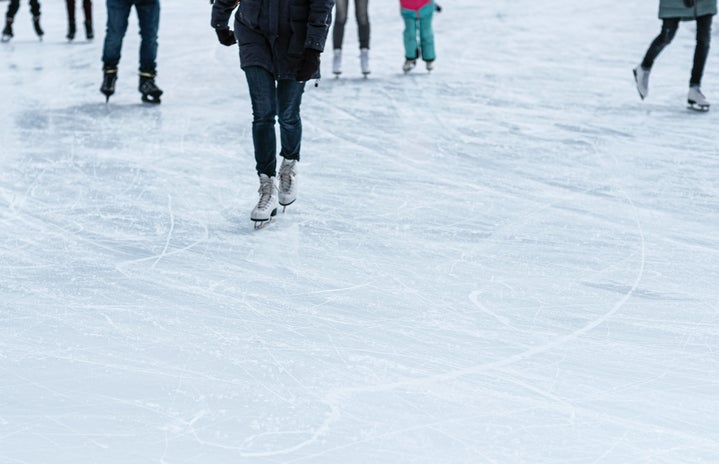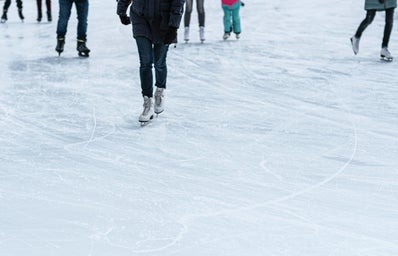Sixteen skaters — dressed identically — take the ice. The skaters move powerfully and gracefully; they remain connected while completing intricate footwork and choreography. Suddenly, the team lifts four girls into the air. The crowd cheers as the program draws to a close.
Synchronized skating is an incredibly demanding and exciting sport. According to U.S. Figure Skating, synchronized skating teams of “eight to 20 skaters perform challenging formations and step sequences together, and competitions use the same judging system as singles, pairs and ice dance.” There are 18 different levels, ranging from beginner to senior. Junior and senior teams perform both a short program and a free program. The U.S. alone has over 600 registered teams, and teams from 20 countries and five continents competed at the 2019 World Synchronized Skating Championships.
Synchronized skating is made up of a unique blend of athleticism and artistry, using elements and choreography to tell a story. Its high-speed nature makes it thrilling to watch. But it can also be dangerous — when you’re connected to 15 people at once, one mistake can quickly lead to multiple falls.
While singles, pairs, and ice dance are already Olympic sports, synchronized skating has yet to make its Olympic debut. After the 2014 Winter Olympics in Sochi, International Skating Union (ISU) President Ottavio Cinquanta sent a request to the International Olympic Committee (IOC) to have the sport approved for 2018, but the request was denied, according to an NBC Sports Article. Synchronized skating was once again denied a place at the 2022 Winter Olympics in Beijing.
Why hasn’t synchronized skating been approved? Logistics. According to NBC Sports, “adding synchronized skating would likely see a big increase in personnel, up to about 150 athletes, coaches, and support staff.” This would inevitably incur a financial cost for the Olympic games, and a significant amount of additional space would be needed to host all of the personnel. Jura Synchro, a synchronized skating news outlet, agrees that “the main reason why the International Olympic Committee (IOC) did not include our discipline was that we are too many on the ice.”
As a result, the ISU has created a new category of synchronized skating called the “Elite 12.” The Elite 12 division has all the same program requirements as the normal senior synchronized skating division, but rather than having 16 skaters on the ice, only 12 skaters are on the ice. Jura Synchro explains that the ISU is optimistic about this new division because other sports, like rugby, that took measures to reduce their number of athletes successfully gained Olympic inclusion.
As a synchronized skater myself, I am hopeful that the new Elite 12 division will provide a pathway for synchronized skating’s acceptance to the Winter Olympic Games. I may be a bit biased, but I think that synchronized skating is an innovative sport with high entertainment value and difficulty on par with existing Olympic sports. Every few years, I look forward to watching all of the different events at the Summer and Winter Olympics on my television.
I will continue dreaming of the day when synchronized skating will take its place on the world’s biggest stage.
Want to keep up with HCBU? Make sure to like us on Facebook, follow us on Instagram, check out our Pinterest board, and read our latest Tweets!





